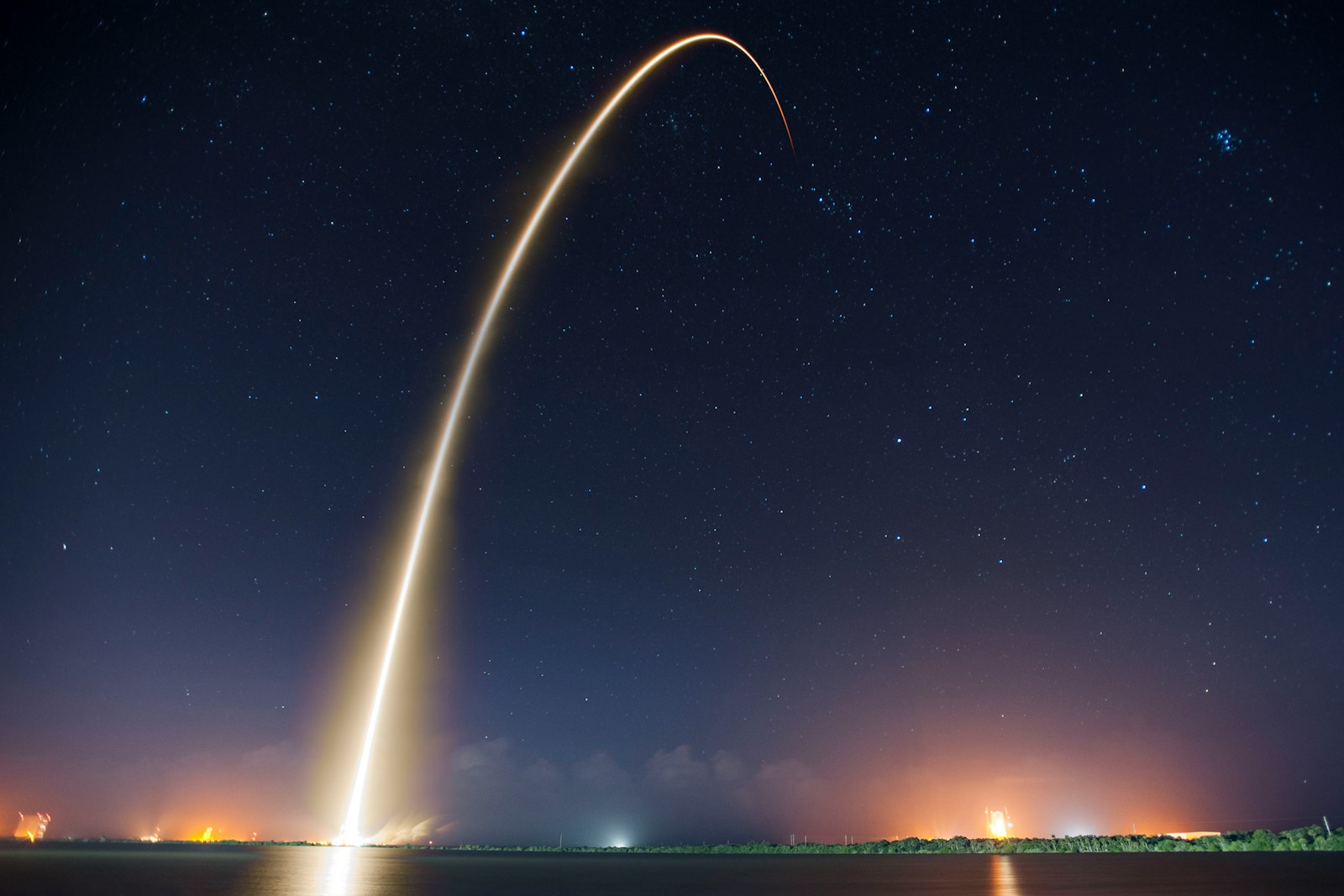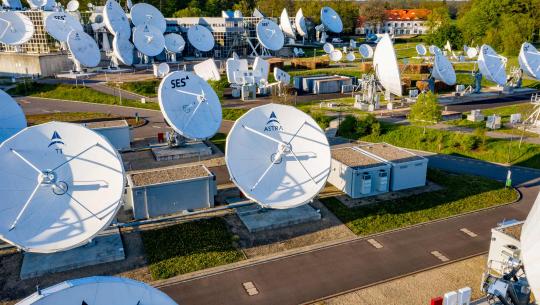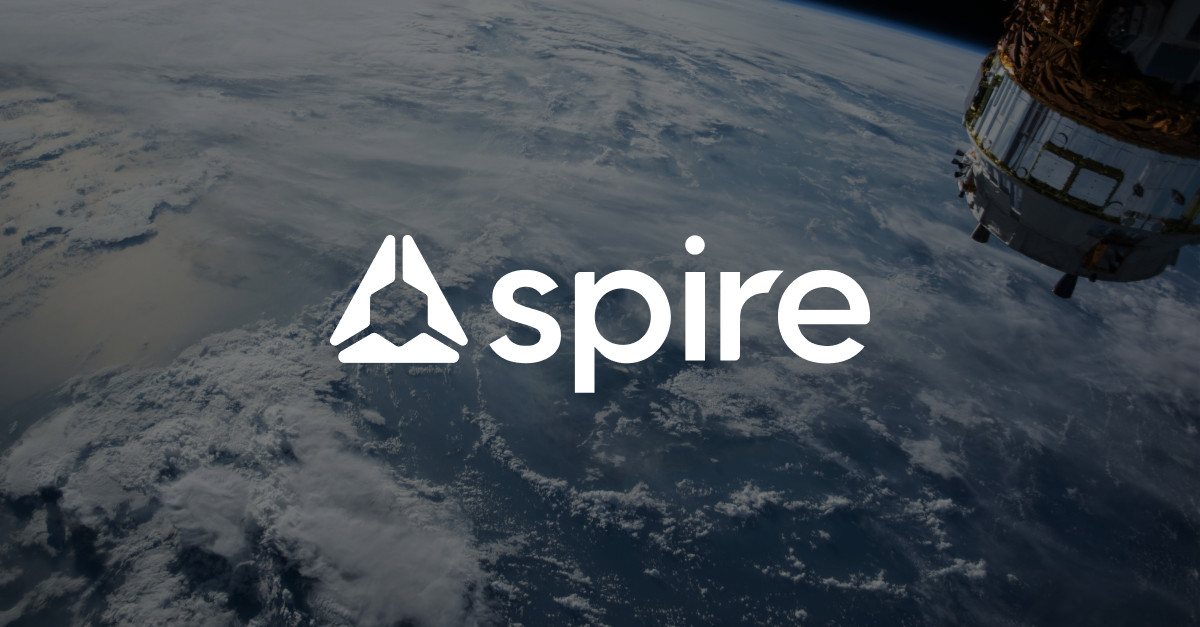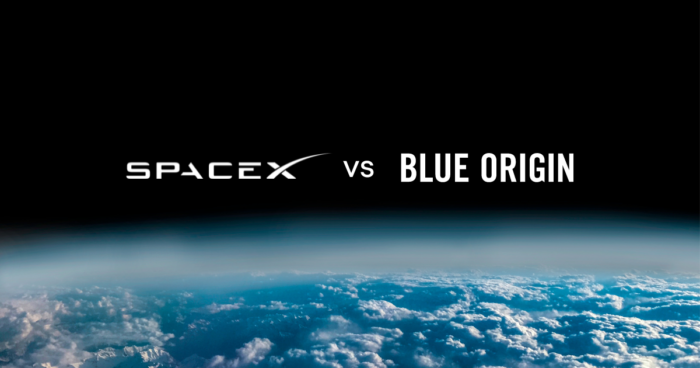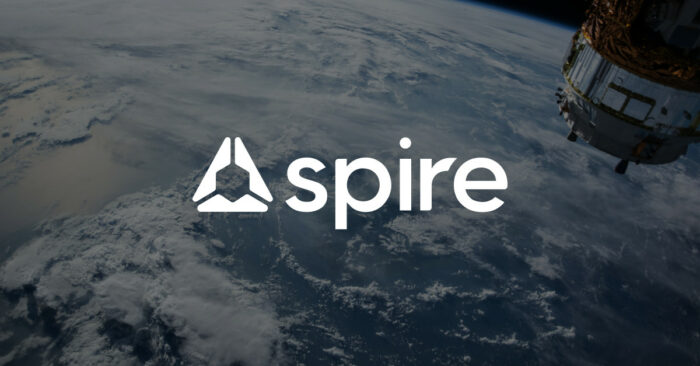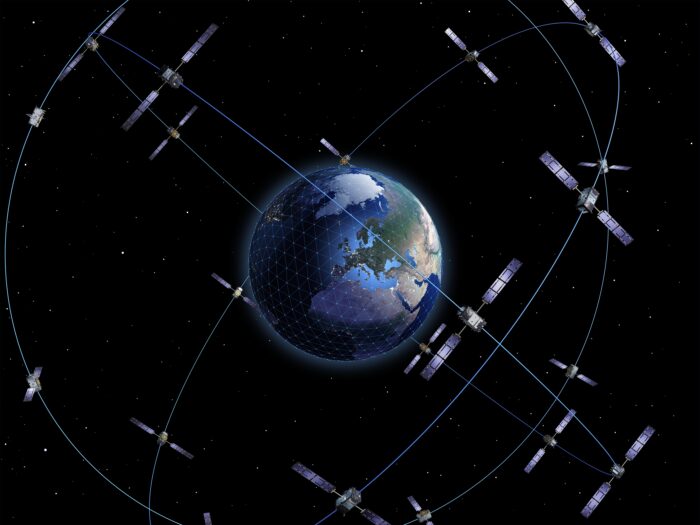By: Julia Seibert
Dreamers flock to California for the stars; some to become them, others to reach them. Lured by geography, supply chains, and a deep pool of local talent, hordes of space companies have found a home in the state, their futuristic HQs nestled among palm trees and cacti. Every corner of the industry is represented here, from the scraggy startup to mighty heavyweights, and includes some of the newest, most daring ventures around. As of 2022, California hosted almost a third of the US’s space tech companies – but as the space business surges, the state’s representatives want a bigger slice of the pie. Will the industry play along?
Space Companies in California
SpaceX
While aerospace and defense titans like Boeing and Lockheed Martin have sites in California, the state’s crown jewel of space is undoubtedly SpaceX. The company is, after all, beyond compare. Its rockets launched 382 metric tons to orbit in Q4 of 2023: about 8 times that of the world’s number two (China’s governmental contractor). Its Falcon 9 rocket boosters and fairings return to Earth after launch, saving the company tens of millions and allowing it to launch at a breakneck pace. No other company can do this, so SpaceX dominates the industry as competition struggles to catch up (SpaceX launched nearly 100 rockets in 2023; other Western companies barely manage 10 a year).
SpaceX launches everything and anyone, including bucketloads of commercial satellites and some tourists. The US government relies on the company to launch astronauts and satellites and land humans on the moon for the first time in over 50 years. SpaceX also recently nabbed a $1.8 billion contract to build the US a hundreds-strong spy satellite constellation. But most of SpaceX’s launches carry Starlink satellites, whose internet service the company hopes will finance its holy grail: building a city on Mars. For that, they’re going to need some big rockets – like the Starship. This rocket system, designed to be fully reusable, stands around 120 meters tall (possibly 140-50 in the future), making it bigger than anything that came before it. It’s not yet operational, but if it delivers on founder Elon Musk’s promises, it could send a whopping 200 tons into orbit while remaining reusable and therefore ridiculously cheap, upending the industry once again.
Rocket Lab
Rocket Lab, originally founded in New Zealand but now based in California, is no slacker either. The company’s current specialism is small rockets, a niche that it comfortably rules. Its Electron rockets, 18 meters tall, are designed to launch small satellites, which rose in popularity as components became smaller, lighter, and more affordable. The idea is that while large rockets like SpaceX’s Falcons can launch them for cheaper (by packing a hundred or so into its fairing), small rockets can ferry them to bespoke orbital locations without the wait-times of rideshares – like taking a more expensive taxi over a bus. Unfortunately for Rocket Lab, though, many customers seem to be just fine taking the bus, with SpaceX’s cheap rideshare missions always heaving with small satellites. The growing popularity of satellite constellations (for which big rockets are a no-brainer) only adds to the issue, as does the looming threat of SpaceX’s Starship and its fiendishly low prices. Therefore, Rocket Lab is looking to outgrow small rockets; its next vehicle, the reusable medium-lift Neutron, is designed to compete with SpaceX’s Falcons and is set for a possible 2024 maiden flight.
Alongside rockets, Rocket Lab also builds a variety of spacecraft that customers can commission and customize. Its Photon craft, for example, flew NASA’s CAPSTONE mission around the moon. Its Explorer platform is built for interplanetary missions and is set to be used for NASA’s upcoming EscaPADE Mars mission, and will also be used for the first privately funded mission to Venus as soon as late 2024. The Lightning platform, meanwhile, is designed for long Low Earth Orbit (LEO) missions, and has been contracted by the US’s Space Development Agency (SDA) for an 18-satellite constellation as well as a 17-satellite constellation for Globalstar. Finally, the Pioneer platform serves unique mission profiles, such as manufacturing startup Varda’s first space-based mini-factory.
Visit company’s profile page.
Planet Labs
Earth observation company Planet Labs’ business is simple; who wouldn’t want to peek at enemies, investments, and climate patterns from orbit? The company has a fleet of over 200 satellites in orbit, most of which are the shoebox-sized Doves. The machines fly in a polar orbit, allowing them to image the entirety of the Earth as the planet revolves and capture the same sight multiple times a day. The company boasts a variety of resolutions for its snapshots, ranging from around 4 meters to 50 centimeters per pixel, and offers imaging in both optical and hyperspectral wavelengths; the latter is especially useful for tracking agriculture and wildfires, as well as monitoring vessels or enemies under cover.
The US government has some eagle-eyed spy birds of its own, but Planet and its peers have proven themselves valuable due to the sheer amount of data they can produce; these constellations’ rapid revisit rates are the closest thing to a surveillance camera in orbit as you can get. This way, Planet managed to snap up contracts with few governmental agencies, including NASA and the National Reconnaissance Office (NRO). Aside from their governmental use, Planet’s services are also useful to climate scientists and commercial customers hoping to track market patterns, such as activity at a factory.
Visit company’s profile page.
Top Space Startups in California
Impulse Space
Impulse Space, founded by ex-SpaceX propulsion magician Tom Mueller, is eyeing the business of orbital transfer vehicles (OTVs) or space tugs: spacecraft that can haul satellites into their intended orbits. It’s a clever endeavor; while satellite companies love SpaceX’s cheap rideshare flights, it still leaves them with the problem of shuttling the satellites to their final orbital locations. But adding extra propulsion makes the satellite bulkier than it needs to be. And if customers want to venture into farther orbits, they need to fork out for a bigger rocket or spend millions in propellant for the satellite to guzzle on its journey (which can take months).
That’s where Impulse’s machines come in. Its flight-proven Mira spacecraft, about the size of a dishwasher, is designed to propel satellites to their target orbits after they reach space – kind of like a pint-sized additional rocket stage. More recently, Impulse unveiled Helios, a powerhouse of a tug designed to lug up to five tons from LEO into Geostationary Orbit (GEO) – about 36,000 kilometers above Earth – in a day. This way, customers can launch heavy satellites into faraway orbits while still using low-cost rockets like the Falcon 9. Rideshares on Starship will be even cheaper, strengthening the case for OTVs. ‘SpaceX opened up access to orbit by lowering the cost of access [to] space, and now we want to open up access to more orbits… we want to make it cheap and easy to get anywhere in the Solar System,’ says Mueller (as reported by Ars Technica).
Visit company’s profile page.
Varda
Easier, cheaper access to space gives way to the emergence of newfangled ventures like Varda’s. The startup aims to turn orbit into a pharma hub by sending up capsules with chemicals to be processed in space and returning the results to Earth. It might sound like sci-fi, but there’s logic behind it; Earth’s gravity can prevent chemicals from mixing properly, producing imperfect drugs. Similarly, protein crystals – used by scientists to study diseases and develop treatment – are short and therefore hard to study when produced on Earth, while orbital ones are much longer.
Varda, whose capsule proved its viability during a 2023 test flight, hopes that through sending regular experiments to orbit and back, it will eventually stumble across a ‘golden-ticket drug’: a molecule that benefits from the orbital environment so much that it makes sense to mass-produce it up there (as reported by CNN). If that happens, Varda could cash in; some drugs already cost tens of thousands of dollars per kilo, and Varda’s craft can produce up to 60 kilos in one go. Alongside pharma, Varda’s platforms could be used to produce fiberoptic cables, semiconductors, or even bioprinted organs. The company also markets its capsule as a testbed for hypersonic flight testing, for which it has already been contracted by the US Air Force.
Visit company’s profile page.
Astroforge
The solar system teems with asteroids made of valuable metals ripe for the picking – and Astroforge wants to get there first. The company has its eye set on M-type asteroids. These smallish metallic lumps can contain Platinum Group Metals: rare metals that play vital roles in medicine and fuel cells. On Earth, these are tricky to mine and accordingly expensive, and the process is environmentally detrimental. Astroforge’s solution is to harvest the metals from asteroids, though this is easier said than done; the logistical challenges are astronomical, and to date, only relatively small asteroid samples have been returned to Earth.
But Astroforge are in it for the long haul, focusing on the end goal and refusing to get distracted by nearer-term sources of income. Its first mission (an orbital refinery) launched in 2023, and the startup is planning to send a surveyor mission to a potential mining target in 2024. To stop anyone from following suit, Astroforge is keeping mum about what asteroid that is. Next, a bigger spacecraft will land on it, extract and refine the resources, and head back to Earth. But as founder Matt Gialich tells Payload, the process will hardly destroy the PGM industry, which is worth tens of billions. Astroforge’s spacecraft can only return around 1-2,000 kilograms of metals (amounting up to $140 million in return mass per mission), with each mission taking one to two years.
Visit company’s profile page.
Impact of Space Companies on California’s Economy and Innovations
California’s space industry creates roughly $60 billion in economic activity a year and employs half a million people. There are a few reasons for this; for one, the state is home to some key NASA sites like its Ames Research Center and Jet Propulsion Laboratory, as well as countless sources of people with brains coming out of their ears, such as Stanford, Berkeley, and Silicon Valley. California also hosts the Vandenberg Space Force, frequently used by SpaceX for launches. In addition, many beefy aerospace veterans like Northrop Grumman and Lockheed Martin have several sites in the area. The availability of talent, supply chains, and infrastructure makes California an attractive place for companies to set up shop; in fact, SpaceX’s HQ used to be a Northrop manufacturing facility. Recognizing the potential, California’s legislators have begun seeking ways to relieve some bureaucratic pains of doing business in space by establishing a Space Industry Task Force in 2022, aimed at attracting business, building more test and launch facilities, and strengthening public-private partnerships (often lucrative opportunities for startups).
Future Opportunities for Growth in The Space Sector
California’s standing in the industry is already significant – and the rise of companies like SpaceX show no signs of stopping – but there is one little caveat: location, location, location. California’s coastline does make it a handy place for sending rockets into orbit, since launching over land would risk pelting innocent civilians with fiery debris in case of mission failure – which is generally to be avoided. But with eastward launches out of the question, rockets can’t make use of the extra kick given by the Earth’s rotation when launching in that direction, meaning equatorial orbits cannot be reached. Instead, Californian rockets are limited to launching to the south, into a polar orbit, and hardware destined for equatorial orbits must be shipped to the opposite coast.
Apart from that, though, California’s tech talent and knack for innovation puts its companies in a useful position in such a volatile, ever-changing business. Already, the brains behind some of the most cutting-edge technologies – megarockets, OTVs, manufacturing – are headquartered there, showing rapid adaptability to industry developments. Also, the US government increasingly relies on commercial outsourcing for its space projects, many of which involve a return and longterm presence on the moon. Pulling that off requires the niftiest of tech. So as the industry begins to look past Earth orbit, California’s space star might still be on the rise.
If you found this article to be informative, you can explore more current space news, exclusives, interviews, and podcasts.
Share this article:
